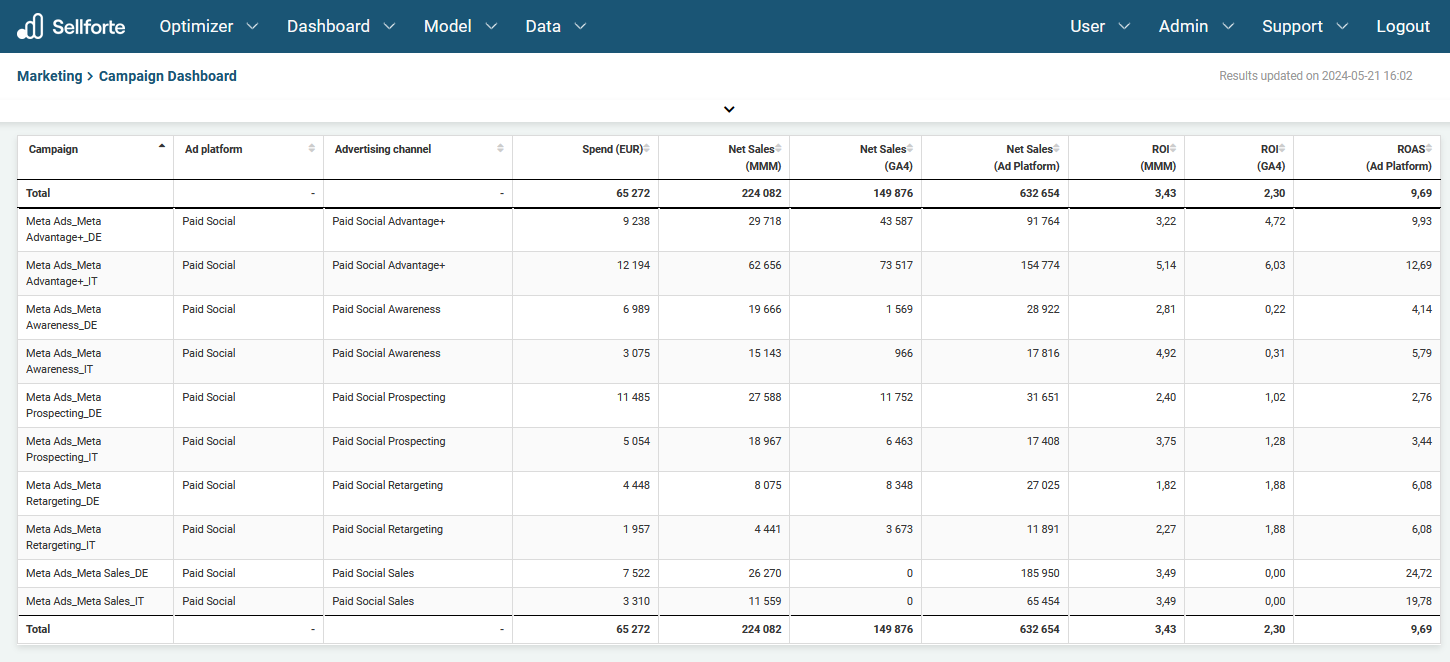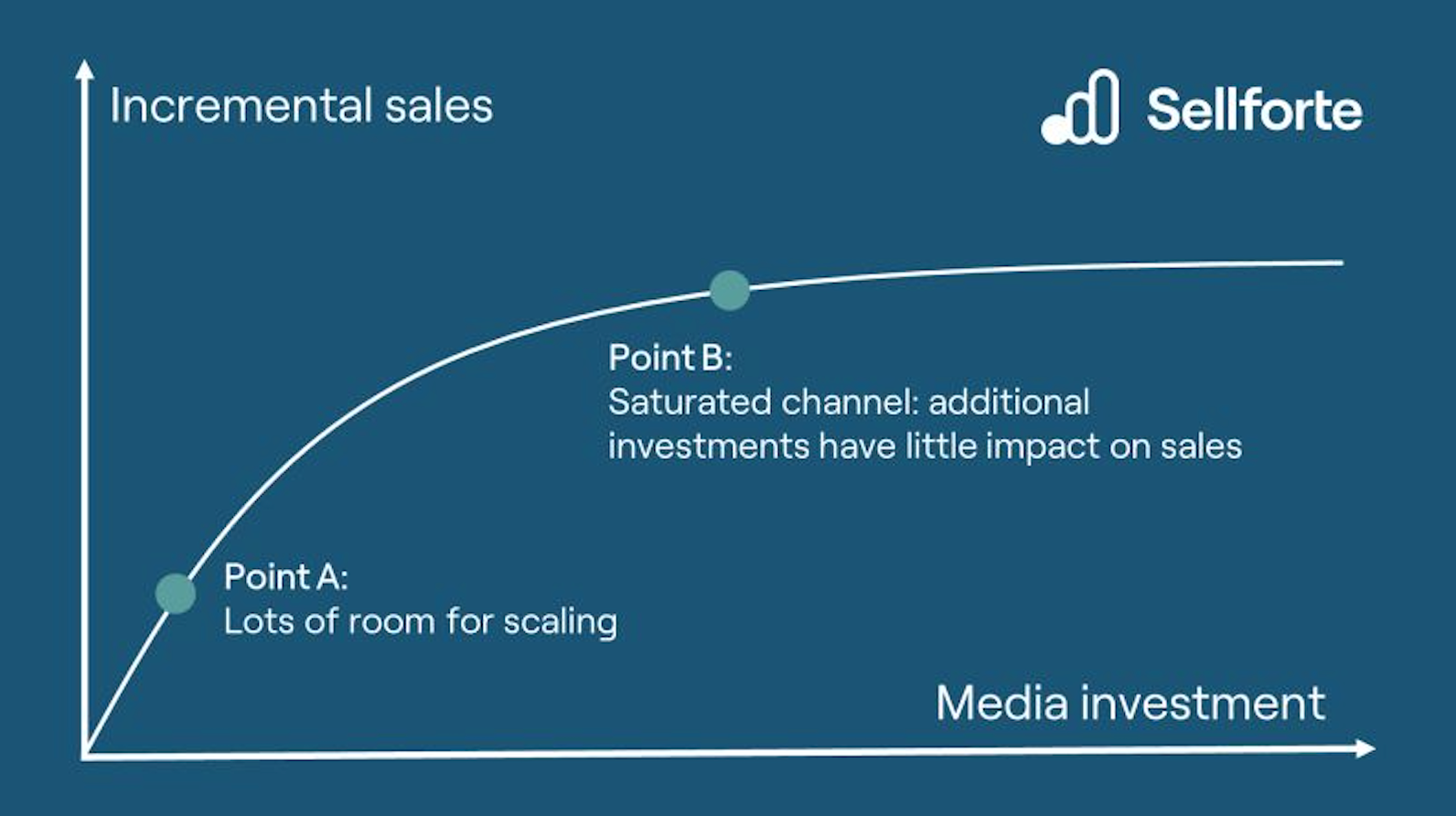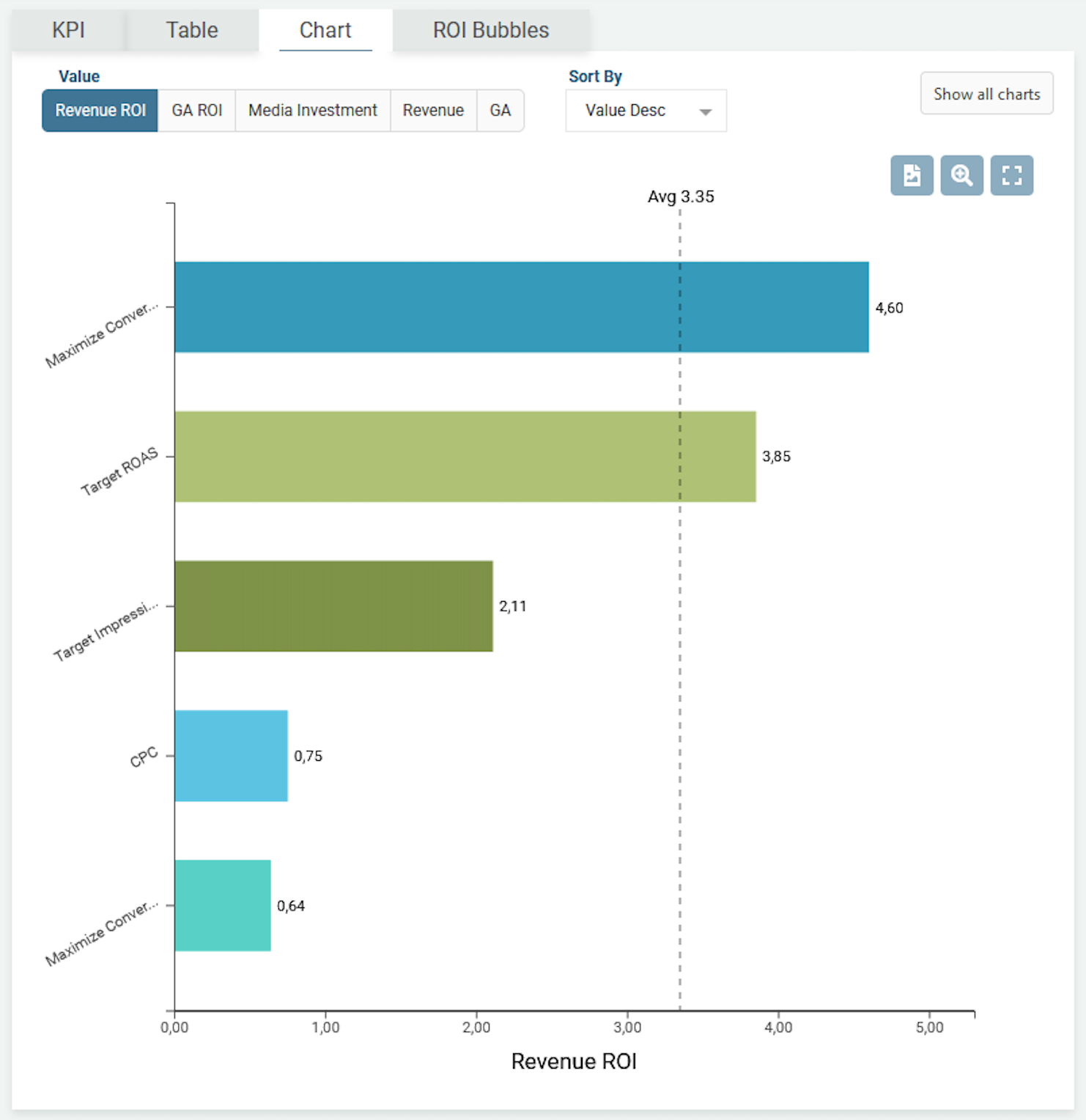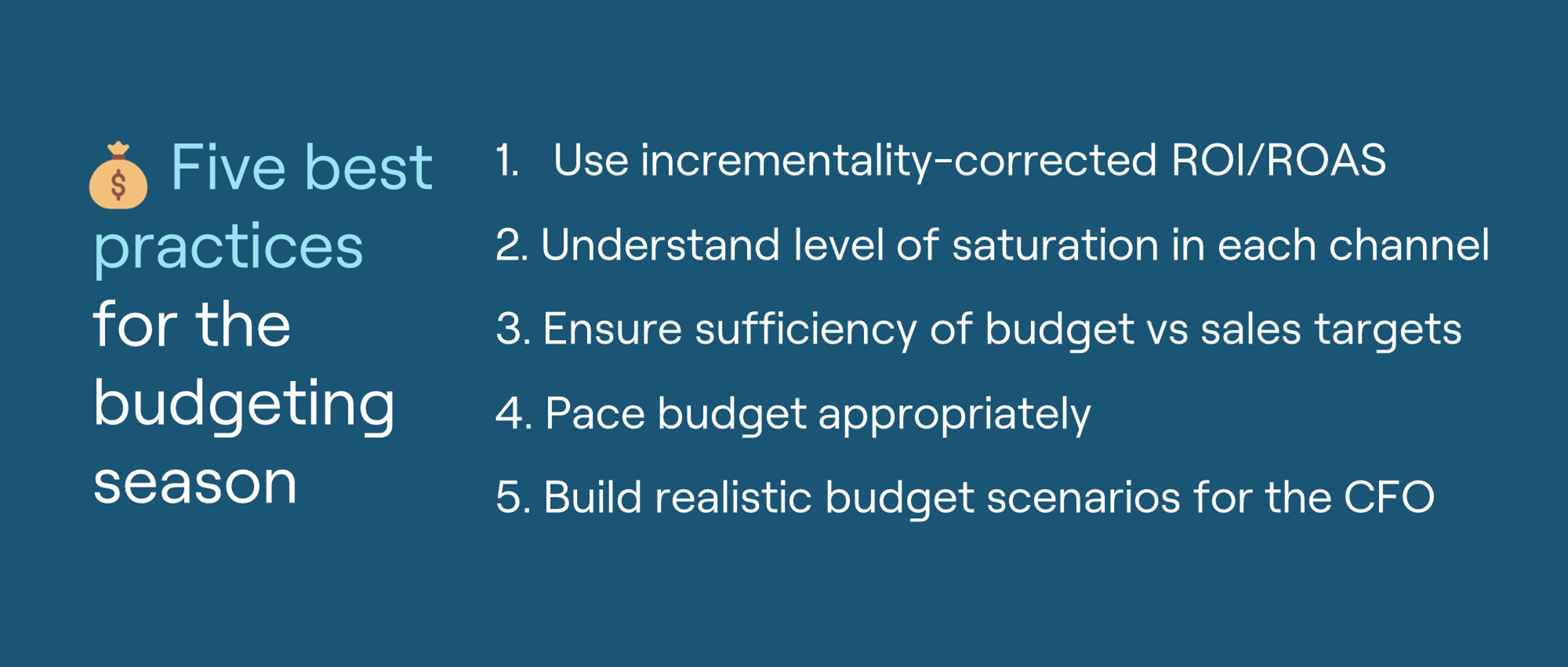How Performance Marketers Use MMM to Maximize Campaign ROI
Performance marketing teams, if you haven’t yet embraced Marketing Mix Modeling (MMM), it’s definitely time to reconsider! MMM used to be a high-level tool relevant only in the annual planning process for getting recommendations on high-level media budget allocations. However, today's MMMs can serve tactical use-cases as well, making them relevant for performance marketing professionals. Modern MMM solutions offer campaign-level ROI tracking for e-commerce, DTC brands, and performance marketing teams.
In this article, we’ll discuss four ways the latest advances in MMM technology can help your team make smarter, more data-driven decisions. Let’s dive in!
Understand the True ROI of Each Campaign within Ad Platforms
Performance marketers typically use one of three alternative methods for measuring marketing effectiveness:
- Ad platform-reported ROAS
- Google Analytics 4-reported ROAS
- MMM-reported ROI
MMM-reported ROI is the only ROI metric that accounts for the true incrementality of the analyzed marketing activity. MMM captures the true incremental sales driven by each activity, thus revealing the true ROI.
Ad platform-reported ROAS is often significantly higher than MMM-reported ROI because their tracking method captures conversions driven by other media and conversions that would have occurred without marketing. For example, there might have been a TV ad or a display ad before a person started their conversion journey on a social media platform, but the social media platform might attribute that conversion journey to itself.
Google Analytics 4-reported ROAS is often based on last-click or data-driven attribution. GA4 tends to favor marketing activities closer to purchase and under-report activities that happened earlier in the funnel. For example, GA4 typically over-reports the ROAS of branded search and under-reports social media marketing.
More information about incrementality and Marketing Mix Modeling can be found in this post.
Now let’s talk about something truly amazing: MMM can provide you with the true ROI for each campaign within each ad platform. While ad platform comparisons (e.g., Facebook vs. Google) and advertising channel comparisons (e.g., FB retargeting vs. FB prospecting) are important, campaign-level ROI tracking is truly groundbreaking. It’s an MMM feature that was not possible before.
This is how campaign ROI comparison could look like in the Sellforte MMM for Meta Ads.

Why is the campaign-level view important?
- You can stop the campaigns that are clearly not working.
- You can re-evaluate your approach for medium-performance campaigns
- You can increase investments in high-performance campaigns with high marginal ROI.
When you do this continuously (daily / weekly), you will drive more marketing-driven sales and profit for your company.
Understand the level of saturation in each marketing channel
Marketing channel saturation is not an “if” problem but rather a “when” event. Marketing channel saturation occurs when a particular marketing channel reaches a point where additional investment no longer yields sufficiently high returns to justify the investment. It is REALLY important to understand where that point is; otherwise, you could be spending lots of money on ads without getting much return. For example, your Branded Search might already be at 90% of its maximum spend before the channel is saturated, while PMAX is only at 40%.
MMM provides you with response curves, which enable you to analyze the level of saturation. Below is an example of a response curve chart.
- If you are at point A: More investments at this point drive a good amount of incremental sales for your company. In other words, the marginal ROI at this point is high. You have room to scale this activity. Typically, it's a good idea to invest more.
- If you are at point B: Your marketing activity is saturated, meaning that additional investments bring very little back in incremental sales. In other words, your marginal ROI is low. Typically, it's a bad idea to invest more.

Optimize Bidding Strategies and Campaign Objectives
Let’s dive deeper into MMM features that didn’t exist until recently.
MMM gives you valuable insights into the bidding strategy types in Google and campaign objectives in Facebook.
- For Facebook, campaign objectives include sales, conversions, and traffic.
- For Google, bidding strategy types include target CPA, target ROAS, max conversions, max conversion value, and enhanced CPC.
With MMM, you can review the ROI of each of these. Below is an example of a Google Ads analysis on the Sellforte platform.

When starting a new campaign, you can analyze how different campaign objectives and bidding strategy types have worked in similar campaigns previously. For example, if you notice that “maximize conversions” has consistently driven higher sales for similar past campaigns, you might choose to implement this strategy for your campaign.
Optimize bid levels
A key task in campaign performance optimization is setting the right bid levels. For example, what is the optimal target ROAS level for a target ROAS campaign? Fortunately, MMM can help with this as well. Here’s a simple example:
You're running a Google Performance Max campaign with a target ROAS of 7.
MMM's campaign-level ROI tracking notices that this campaign has the highest marginal ROI. This means that, out of all the campaigns, this one brings the highest return for the next invested dollar/euro.
👉 You might consider lowering your target ROAS to 6.5 or 6 so that the algorithm can invest more in the campaign.
You're one step closer to a more optimal investment allocation. After this, continue tracking how the ROI of your campaigns develops and implement optimization recommendations regularly across your campaign portfolio.
Conclusion and key-takeaways
MMM has recently evolved from a high-level, annual planning tool into a versatile and essential resource for performance marketing teams. Here are some key benefits of using modern MMM:
- Understanding True ROI: Track your marketing performance with an ROI metrics based on true incrementality
- Recognizing Channel Saturation: Identify when a channel has reached its maximum effectiveness to avoid wasting budget.
- Optimizing Bidding Strategies: Gain insights into the performance of different bidding strategies and campaign objectives for better planning.
- Setting Optimal Bid Levels: Determine the ideal bid levels for each campaign to drive more sales & profit with your campaigns
- Continuous Optimization: Adjust budget allocation continuously based on current campaign performance.
With MMM, performance marketing teams can make smarter, data-driven decisions that drive better results. If you haven't yet integrated MMM into your marketing toolkit, now is the perfect time to do so. Book a demo with us and let’s discuss the best set up for your business!
Curious to learn more? Book a demo.

You May Also Like
These Related Stories

